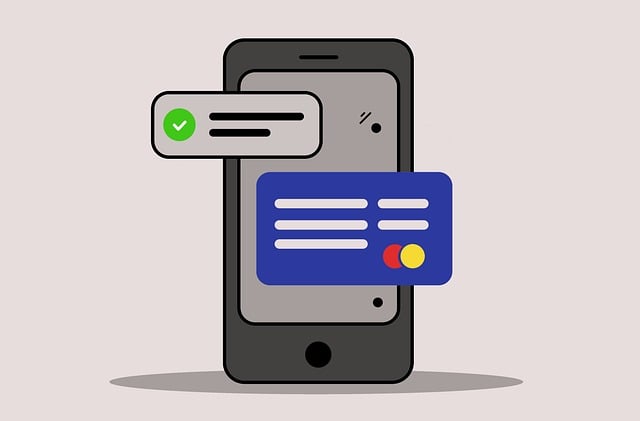AI-powered ecommerce is transforming retail by offering personalized shopping experiences through chatbots that automate customer service. These bots use NLP for swift product inquiries, recommendations, and order tracking, reducing response times and human workload. Defining goals, understanding user demographics, and tailoring interactions are key to success. Designing structured conversation flows with NLP ensures accurate, personalized guidance throughout the purchase journey. Choosing technology from platforms like NLTK, AWS, or Google Cloud improves chatbot performance and scalability. Rigorous testing and continuous improvement through analytics and feedback ensure accuracy and adaptability over time.
Building a chatbot for your ecommerce platform can revolutionize customer interactions and drive sales. In today’s digital era, AI-powered ecommerce is transforming the way businesses operate by offering personalized shopping experiences. This comprehensive guide will walk you through the process of creating an effective chatbot, from understanding the fundamentals of AI in ecommerce to designing conversation flows and choosing the right development tools. Learn how to test, implement, and continuously improve your chatbot for maximum impact.
- Understanding AI-Powered Ecommerce and Chatbots
- Defining Your Chatbot's Purpose and Target Audience
- Designing the Chatbot Conversation Flow
- Choosing the Right Technology and Development Tools
- Testing, Implementing, and Continuously Improving Your Chatbot
Understanding AI-Powered Ecommerce and Chatbots

In today’s digital age, AI-powered ecommerce is transforming the way businesses interact with customers. By leveraging artificial intelligence, retailers can offer personalized shopping experiences, automate various aspects of customer service, and ultimately drive sales growth. Chatbots, as a key component of this revolution, play a pivotal role in enhancing user engagement and streamlining operational processes.
These intelligent assistants use natural language processing (NLP) to understand customer queries and provide contextually relevant responses. Whether it’s answering product questions, offering recommendations, or assisting with order tracking, chatbots significantly reduce response times and workload for human agents. This not only improves customer satisfaction but also allows businesses to focus on more complex tasks, contributing to a more efficient and effective ecommerce ecosystem.
Defining Your Chatbot's Purpose and Target Audience

When building a chatbot for e-commerce, defining its purpose and target audience is the first step in ensuring its success. An AI-powered ecommerce chatbot should be designed with specific goals in mind—whether it’s providing customer support, assisting with product searches, or facilitating purchases. Understanding your target audience is equally crucial. Consider factors like age range, preferred communication styles, and shopping habits to tailor interactions effectively.
For instance, a chatbot aimed at younger tech-savvy shoppers might embrace casual language and interactive elements, while one targeting older customers could adopt a more formal tone and offer detailed product explanations. By clearly outlining these aspects early in the development process, you set the stage for creating a chatbot that resonates with your users, enhancing their shopping experience through personalized and engaging interactions in the realm of AI-powered ecommerce.
Designing the Chatbot Conversation Flow

Designing the chatbot conversation flow is a crucial step in building an effective AI-powered ecommerce assistant. It involves creating a structured path that guides users through their shopping journey, from initial product discovery to final purchase. Start by mapping out different user scenarios and intent types, such as product recommendations, pricing inquiries, or order tracking. Organize these conversations into logical branches, ensuring each interaction builds upon the previous one.
Use natural language processing (NLP) techniques to enable the chatbot to understand and respond accurately to a wide range of user inputs. Incorporate contextual information like browsing history, previous purchases, and user preferences to personalize the conversation. A well-designed flow should adapt to the user’s needs, providing relevant product suggestions, answering queries promptly, and seamlessly guiding them towards completing their purchase.
Choosing the Right Technology and Development Tools

When building an AI-powered chatbot for e-commerce, selecting the right technology and development tools is a strategic move that will shape your chatbot’s performance and capabilities. Look for platforms that offer pre-built integrations with popular e-commerce systems, allowing seamless data exchange between your store and the chatbot. Natural Language Processing (NLP) libraries, such as NLTK or spaCy, are essential for understanding user queries. These tools enable the chatbot to interpret customer intent accurately, a key aspect of delivering an effective AI-driven shopping experience.
Additionally, consider development environments that support both front-end and back-end functionalities, providing an efficient workflow. Cloud-based services like AWS or Google Cloud offer scalable infrastructure for handling varying user loads. Their machine learning capabilities can be leveraged to enhance the chatbot’s accuracy over time. Remember, choosing the right tech stack from the start ensures a smoother development process and paves the way for a robust AI-powered ecommerce chatbot that enhances customer engagement and sales.
Testing, Implementing, and Continuously Improving Your Chatbot

After developing your AI-powered chatbot for e-commerce, thorough testing is paramount. Simulate various user scenarios and interactions to ensure the chatbot provides accurate and helpful responses. Utilize a diverse set of input queries to assess its ability to understand different customer needs. This includes testing common inquiries, edge cases, and potential mistakes users might make. Incorporate these tests into your deployment pipeline to catch issues early, ensuring a seamless experience for your customers.
Once your chatbot is live, implementing continuous improvement becomes crucial. Regularly monitor its performance through analytics and user feedback. Identify areas where it struggles or exceeds expectations. Continuously update the chatbot’s knowledge base with new products, promotions, and customer support information. Leveraging machine learning algorithms, your chatbot can learn from interactions, adapt to changing trends in AI-powered e-commerce, and provide increasingly personalized responses over time.
Building a chatbot for e-commerce is a strategic move to enhance customer engagement and drive sales in today’s digital landscape. By following these steps, from understanding AI-powered e-commerce to continuously improving your chatbot, businesses can create an efficient and effective virtual assistant that caters to their target audience’s needs. This approach not only revolutionizes the way customers shop but also positions companies as innovators in the competitive online market.
